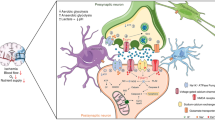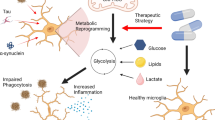Abstract
Nitric oxide (NO) at high levels is cytotoxic, and may be involved in a range of inflammatory, neurodegenerative, and cardiovascular/ischaemic pathologies. The mechanism of NO-induced cytotoxicity is unclear. Recently we and others have found that low (nanomolar) levels of NO reversibly inhibit mitochondrial respiration by binding to the oxygen binding site of cytochrome oxidase in competition with oxygen. This raises the apparent Km for oxygen of mitochondrial respiration into the physiological range, potentially making respiration sensitive to the oxygen level. The NO inhibition of oxygen consumption was seen in isolated cytochrome oxidase, mitochondria, brain nerve terminals, and cultured cells. Cultured astrocytes activated to express the inducible form of NO synthase produced up to 1 µM NO and strongly inhibited their own cellular respiration rate. This respiratory inhibition was rapidly reversed by removing the NO, and was due to the inhibition of cytochrome oxidase. These results suggest that any cell producing high levels of NO will inhibit its own respiration and that of surrounding cells, and make the respiration rate sensitive to the oxygen level. This inhibition of energy metabolism may contribute to cytotoxity or cytostasis in some pathologies. (Mol Cell Biochem 174: 189–192, 1997)
Similar content being viewed by others
References
Nathan C: Nitric oxide as a secretory product of mammalian cells. FASEB J 6: 3051–3064, 1992
Moncada S, Higgs A: The L-arginine-nitric oxide pathway. New Eng J Med 329: 2002–2012, 1993
Bredt DS, Snyder SH: Nitric oxide: a physiologic messenger molecule. Annu Rev Biochem 63: 175–195, 1994
Brudvig OW, Stevens OH, Chan OI: Reactions of nitric oxide with cytochrome c oxidase. Biochemistry 19: 5275–5285, 1980
Brown GC, Cooper CE: Nanomolar concentrations of nitric oxide reversibly inhibit synaptosomal respiration by competing with oxygen at cytochrome oxidase. FEBS Lett 356: 295–298, 1994
Brown GC: Nitric oxide regulates mitochondrial respiration and cell functions by inhibiting cytochrome oxidase. FEBS Lett 369: 136–139, 1995
Brown GC, Bolanos JP, Heales SJR, Clark JB: Nitric oxide produced by activated astrocytes rapidly and reversibly inhibits cellular respiration. Neuroscience Lett 193: 201–204, 1995
Bolaños JP, Peuchen S, Heales SJR, Land JM, Clark JB: Nitric oxidemediated inhibition of the mitochondrial respiratory chain in cultured astrocytes. J Neurochem 63: 910–916, 1994
Carr GJ, Ferguson SJ: Nitric oxide formed by nitrite reductase of Paracoccus denitrificans is sufficiently stable to inhibit cytochrome oxidase activity and is reduced by its reductase under aerobic conditions. Biochim Biophys Acta 1017: 57–62, 1990
Cleeter MWJ, Cooper JM, Darley-Usmar VM, Moncada S, Scapira AHV: Reversible inhibition of cytochrome c oxidase, the terminal enzyme of the mitochondrial respiratory chain, by nitric oxide. FEBS Lett 345: 50–54, 1994
Borutaite V, Brown GC: Mitochondria rapidly reduce nitric oxide, and nitric oxide reversibly inhibits mitochondrial respiration. Biochem J 315: 295–299, 1996
Takehara Y, Kanno T, Yoshioka T, Inoue M, Utsumi K: Oxygendependent regulation of mitochondrial energy metabolism by nitric oxide. Arch Biochem Biophys 323: 27–32, 1995
Erecinska M, Nelson D, Vanderkooi JM: Effects of NO-generating compounds on synaptosomal energy metabolism. J Neurochem 65: 2699–2705, 1995
Schweizer M, Richter C: Nitric oxide potently and reversibly deenergises mitochondria at low oxygen tension. Biochem Biophys Res Commun 204: 169–175, 1994
Richter C, Gogvadze V, Schlapbach R, Schweizer M, Schlegel J: Nitric oxide kills hepatocytes by mobilising mitochondrial calcium. Biochem Biophys Res Commun 205: 1143–1150, 1994
Laffranchi R, Gogvadze V, Richter C, Spinas GA: Nitric oxide (nitrogen monoxide, NO) stimulates insulin secretion by inducing calcium release from mitochondria. Biochem Biophys Res Commun 217: 584– 591, 1995
Cooper CE, Brown GC: The interaction between nitric oxide and brain nerve terminals as studied by electron paramagnetic resonance. Biochem Biophys Res Commun 212: 404–412, 1995
Brown GC: Reversible binding and inhibition of catalase by nitric oxide. Eur J Biochem 232: 188–191, 1995
Malinski T, Bailey F, Zhang ZG, Chopp M: Nitric oxide measured by a porphyrinic microsensor in rat brain after transient middle cerebral artery occlusion. J Cereb Blood Flow Metab 13: 355–358, 1993
Kobzik L, Stringer B, Balligand J-L, Reid MB, Stamler JS: Endothelial type nitric oxide synthase in skeletal muscle fibres: mitochondrial relationships. Biochem Biophys Res Commun 211: 375–381, 1995
Author information
Authors and Affiliations
Rights and permissions
About this article
Cite this article
Brown, G.C. Nitric oxide inhibition of cytochrome oxidase and mitochondrial respiration: Implications for inflammatory, neurodegenerative and ischaemic pathologies. Mol Cell Biochem 174, 189–192 (1997). https://doi.org/10.1023/A:1006800322719
Issue Date:
DOI: https://doi.org/10.1023/A:1006800322719




